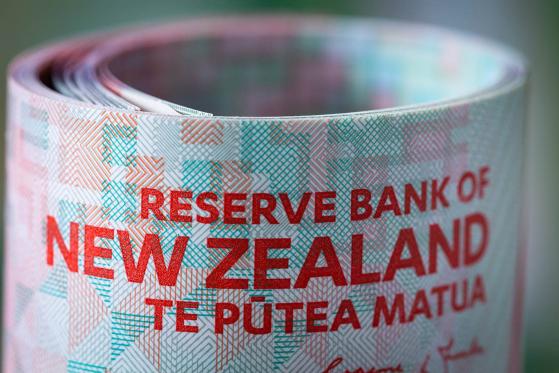PoundSterlingLIVE - The New Zealand Dollar fell sharply across the board after the Reserve Bank of New Zealand (RBNZ) left interest rates unchanged and maintained guidance that rates would remain at current levels for some time.
The GBP/NZD surged by three-quarters of a per cent to 2.0725 in the hours following a decision that saw the reserve bank keep the OCR on hold at 5.5% as most expected and indicate it was not concerned about current inflationary dynamics.
The strong foreign exchange market reaction is because there was growing speculation that the RBNZ might raise interest rates again owing to evidence of persistently strong inflationary undercurrents in the New Zealand economy.
However, the RBNZ said it remains confident that the current level of the OCR is restricting demand.
"The RBNZ was more relaxed about the risks to the inflation outlook after warning in November that further monetary tightening was possible if inflation failed to sufficiently cool," says Nick Tuffley, Chief Economist at Auckland Savings Bank.
The New Zealand Dollar was seen a per cent down on the day at 0.6105 and the Euro to New Zealand Dollar exchange rate was up 0.90% at 1.7727.
Bets for an RBNZ rate hike were raised after domestic lender ANZ said fourth-quarter data revealed the labour market is too tight to be consistent, with inflation falling back to the RBNZ's 2.0% target on a sustained basis.
Another bank, Toronto Dominion, recently also changed its call to predict another rate hike, contributing to rising market bets that left room for disappointment in the event of a hold.
But the tone and nature of the guidance was also always going to be important: if the RBNZ kept interest rates steady but indicated another rate hike could not be ruled out, then the NZ Dollar's downside reaction might have been smaller.
However, the scale of the selloff tells us the market is clearly of the opinion the next move would be a cut. "The message from the RBNZ’s statement was not as hawkish as it could have been. The RBNZ noted the risks are now more balanced as opposed to up as noted in November," says Joseph Capurso, a strategist at Commonwealth Bank.
The RBNZ says although it remains confident that the current level of the OCR is restricting demand, a sustained decline in capacity pressures in the New Zealand economy is still required to ensure that headline inflation returns to the 1 to 3 per cent target.
This means "the OCR needs to remain at a restrictive level for a sustained period of time to ensure this occurs."
So, although another rate hike is not likely, the RBNZ is still likely to hold rates a lot longer than other central bank peers.
This stance can support the New Zealand Dollar over the coming weeks and months, although pricing out the recent speculation about another rate hike could mean further near-term downside.
"Over coming months, we see a high hurdle for the RBNZ to move the OCR in either direction. Certainly, it remains very premature to bank on interest rate cuts, particularly while inflation remains above target," says Tuffley.
An original version of this article can be viewed at Pound Sterling Live
